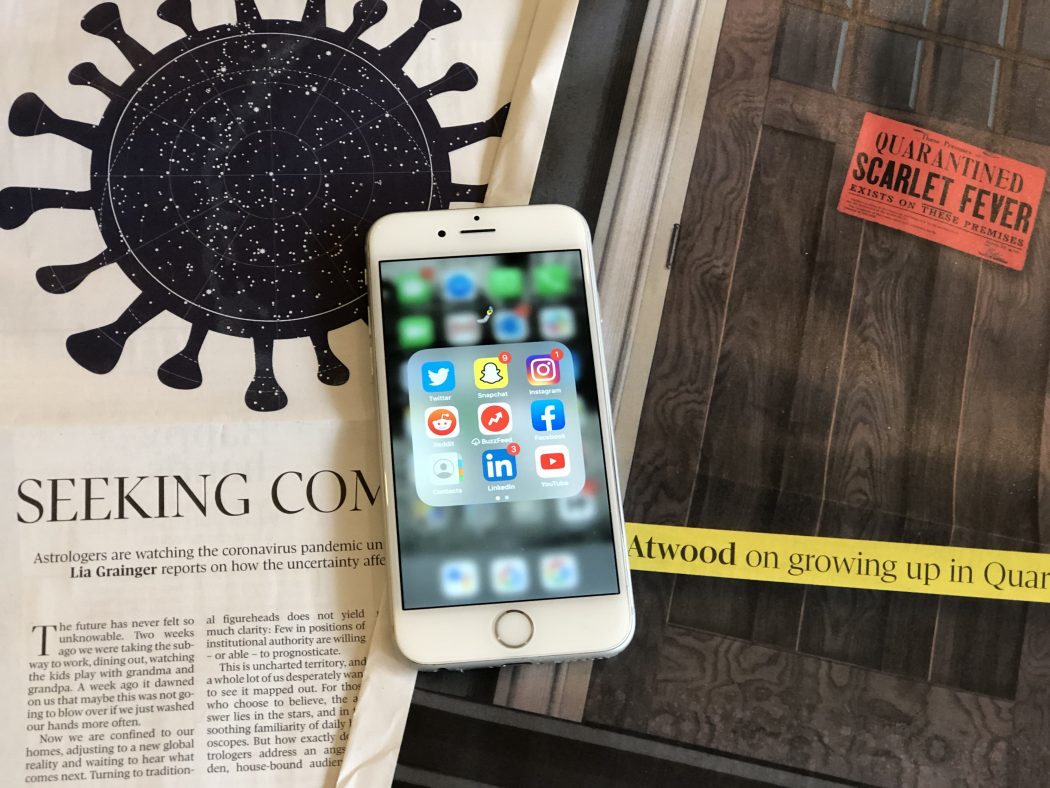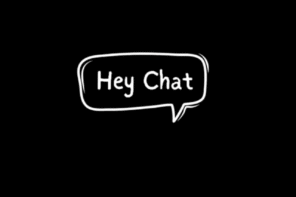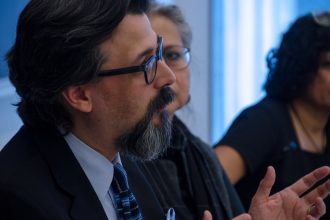We’re all familiar with that implacable, but odd effect of disappearing into the internet; the productivity-related anxiety we have after scrolling through endless feeds, the griminess felt after spiralling down a grisly corner of Youtube, the unsettling ease at which a child can thoroughly master an iPad and the worry of what they might find on it. Yet, despite all this potential discomfort, we are helplessly bound to scrolling through our devices, unable to pull ourselves away.
With the recent quarantine measures taken to slow the spread of COVID-19 and a retreat to the digital world, I expected the same digital weariness to continue for me, if not more pertinent. In this moment of crisis, we’ve done what we usually do and turned to social media as a release. This time, however, it appears different. The unease is still there, but dispersed are also moments of humanity and trust. We’re seeing generosity and hope, selflessness and authenticity on our screens.
Social media has long served to indulge our more selfish sides. It’s a place to share our accomplishments, to document the highlights of our lives, and to brag about how great we are. In the wake of this pandemic, however, people are redefining social media’s purpose to share genorisity and kindness.
Instead of spending time perfecting our digital personas, or searching solely for distractions, individuals are looking into themselves to see what aid they can offer to comfort and uplift others. A renowned playwright hosts writing tutorials on Facebook for aspiring artists. School musicals may be cancelled, but Broadway vet Laura Benanti asks to be their audience so that their hard work may not be wasted. A gourmet pastry chef films tutorials on how to make your own sourdough bread and Lizzo lights sage to play us the flute on her Instagram.
On March 17th, Coldplay’s Chris Martin launched “Together At Home”, a campaign launched alongside the music festival Global Citizen composed of virtual concerts to promote social distancing. Martin hosted a 30-minute livestream performance on Instagram. Later, John Legend joined the initiative and took to his piano as well, pantless. The renowned cellist Yo-Yo-Ma posts videos performing #SongsofComfort, and he encourages others to share their own. Other artists such as Charlie Puth, Keith Urban, and Patti Smith are showing how little is needed to form connections not only with their fans, but with the rest of the world.
In these past weeks, I’ve found a small piece of that trust in social media monoliths resurrected.
For me, a part of why going on social media can feel draining is the infiltration of content produced not by any individual, but by companies and corporations—advertisements and marketing tactics all vying for our attention. Apps like Facebook, Instagram, and Youtube were ostensibly designed to create communities and forge genuine connections, but once these communities began to occupy a potent place in business models, a bond of trust between us consumers and these platforms was ruptured.
In these past weeks, I’ve found a small piece of that trust in social media monoliths resurrected. With the emergence of a common global enemy, we’re sharing the same priority of helping each other. News publications including The New York Times, The Wall Street Journal, and The Guardian have removed paywalls to ensure that the public is receiving accurate information. To combat the lack of exercise possible while confined to our homes, fitness apps are being made free. Streaming services are extending free trials and Disney+ decided to stream Frozen 2 three months ahead of schedule to “surprise families with some fun and joy.” Large companies that represent the threat of capitalism are offering their help, and for the first time, I’m willing to trust them. We are reminded that even mammoth corporations are, at the end of the day, powered by people facing the same difficulties, capable of choosing empathy over profit.
We can harness the power of social media as a way to lessen the social and morale blows of the pandemic.
The rest of us, the ordinary, the unfamous, the scrolling, are offering what we can too. We’re updating everyone on what we’re doing at all times of day: staying home. A global community has formed online encouraging social distancing and greater consideration for vulnerable populations. #StayHomeStaySafe trends on Twitter, new #quarantineselfies grace our screens everyday, and Instagram dedicated an entire story to encourage self-isolation, making it clear that this is the community to be a part of now. Our gesture of selflessness can come not only in the act of isolation, but in sharing ourselves fulfilling this responsibility. We can harness the power of social media as a way to lessen the social and morale blows of the pandemic.
Staying at home with this global community also feels like breaking boundaries, allowing intimacy where it didn’t exist before. My first Zoom meeting this week felt, at first, like joining a Facetime call between close friends. To see my professor and classmates in this format was odd and amusing, but endowed a new openness that enriched our conversation. Talk show hosts such as Jimmy Kimmel and Fallon brought late night television into their homes as well. They use title-sequences drawn by their children and ditched the high-quality cameras for their phones, producing choppy, but charming videos.
While the Internet is often criticised for providing an inauthentic sense of connection, it’s now allowing for unimagined moments of fellowship and closeness.
I’m reminded of that viral BBC video that circled on the Internet a while ago, when a professor being interviewed at home was interrupted by his children wandering in: a daughter dancing and a baby on wheels. The home, a personal and vulnerable space where formality and social normalities have no reign, has become our workplace and school. We’re crossing a boundary, breaking an unspoken deal to keep our distance. Perhaps these ruptures may bring us levity. They force us to see co-workers, professors, and classmates, even if just for a moment, in a more personal light. While the Internet is often criticised for providing an inauthentic sense of connection, it’s now allowing for unimagined moments of fellowship and closeness.
In an interview in Politico, Sherry Turkle, professor of social studies and science and technology at MIT says, “If, moving forward, we apply our most human instincts to our devices, that will have been a powerful COVID-19 legacy.” In a time of fear and uncertainty, our digital environment has become one people can turn to for help, empathy, and connection. May these positive changes in our digital worlds persist once this pandemic subsides.








